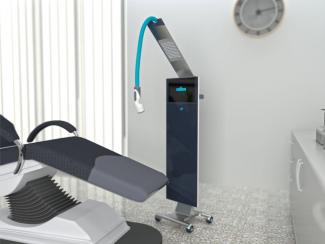
2015-2018
Through December 31, 2018, Reg A+ companies raised $1.5 billion of growth capital*. $1.27 billion was raised via Tier 2 offerings by 115 companies and $230 million was raised by 42 Tier 1 companies. This article discusses Reg A+ metrics through Dec 2018. How we prepare this information**
Capital raised via Reg A+ year by year in the chart below;
|
2015 (6 months) |
~$100 mill raised |
|
2016 |
~$255 mill raised |
|
2017 |
~$500 mill raised |
|
2018 |
$660 mill raised |
*This understates the actual total because we are only able to include Tier 1 (what is Tier 1) companies that have completed their raise before December 2018. Tier 1 offerings that were less than 12 months into their raise are in most cases not included. There is also some under-reporting from Tier 2 offerings that are in process but not completed.
Note my conflict of interest
I have an inherent bias in favor of Regulation A+ because I am the founder and CEO of Manhattan Street Capital, which is a funding platform that helps companies raise capital using Reg A+. My company benefits from Reg A+ doing well.
Largest segments of companies succeeding with Reg A+
Tier 2; Real Estate, Biotech,
Tier 1; Banks
Real estate is by far the largest segment of successful capital raises at 62% of the total or $915 million cumulative.
Rate of SEC Qualification
70% of companies that file their Reg A+ with the SEC become Qualified. Through the end of 2018, 366 companies filed for a Reg A+ offering with the SEC, and 262 companies’ offerings have been Qualified.
40% of companies whose Reg A+ was Qualified by the SEC have raised more than $1 million. Out of the 262 companies whose offering have been qualified,107 companies raised more than $1 million. The two primary reasons for failed offerings are;
1) Companies that do not appeal sufficiently to main street investors tried Reg A+ anyway. Which types of companies are best able to succeed with Reg A+.
2) Insufficient or ineffective marketing. How to succeed in promoting your Reg A+.
2018 Summary
In 2018 Reg A+ companies raised $660 million (averages $55 million per month). Tier 2; $560 million, Tier 1; $100 million.
When we only assess companies that raised more than $1 million, then 47 Tier 2 companies raised an average of $11.8 million, and 9 Tier 1 companies raised an average of $11.2 million.
The growth rate of total capital raised from 2017 to 2018 was 30%. We estimate that the capital raise rate as of May 2019 is $70 million per month.
Real estate offerings
Real estate has emerged as the largest segment for Reg A+ capital raises - approximately 62% of all the capital raised via Reg A+ plus to date has been raised in real estate offerings. How to succeed with Real Estate Reg A+ offerings.
Fundrise is the standout Reg A+ real estate company having raised more than $505 million through December 2018 and having Qualified fourteen separate offerings through the SEC, with five of their funds having completed Qualification for three raises each. Fundrise represents 33% of the total capital raised via Reg A+ to date.
Real estate offerings lend themselves to Reg A+ because;
- There is often an attractive dividend payment
- Because of the security that the real estate itself offers and
- Because it's an understandable asset class and many consumer investors and accredited investors would like more exposure to real estate if they had sufficient capital and time.
Growth in use of Reg A+ for Larger deals
We are seeing an increasing tendency to utilize Reg A+ to raise larger amounts of capital on an ongoing basis. In some cases, the cost of capital can be significantly lower via ongoing continuous Reg A+ offerings year-on-year versus VC, Private Equity or IPO.
Uplisting now approved for Reg A+
In December 2018 SEC extended the reach of Reg A+ to include secondary offerings for already public companies that are current with their SEC reporting. This expansion has the potential to significantly increase the use of Reg A+ as already-public companies come to realize they can use a less expensive and simpler Reg A+ process to raise their secondaries more efficiently than in the past.
Reg A+ IPOs
We have seen 11 Reg A+ IPOs beginning in June of 2017, the most recent being Soliton (SOLY), which listed on the NASDAQ in February 2019. See our list of these IPOs.
The largest Reg A+ IPO to date is that of Chicken Soup for the Soul Entertainment (NASDAQ:CSSE) which raised $30 million in July 2017. While many of the Reg A+ IPO stocks have suffered poor post-listing share price performance, Soliton has performed well to date (note that I have a long position in (NASDAQ:SOLY) and Chicken Soup for the Soul entertainment has recovered much of the ground it lost post listing, presumably because the company has made a series of positive announcements (I own a long position in CSSE).
It's worth noting that as with most sub-$50 million S-1 IPOs, Reg A+ IPOs to date have been best efforts underwritings, while the full commit type underwriting is used in larger S-1s. The SEC only allows the use of the greenshoe in the case of full commit underwritten IPOs. It is likely that some of the Reg A+ IPOs would have performed better in the aftermarket had they been able to stabilize their share price via the greenshoe.
**How we find and compile the data that comprises this report
We analyze the SEC Edgar filings for companies that have completed and those that are in-process their Reg A+ offerings. We do this by reading and extracting data from their 1-K and 1-SA filings. We analyze the reported numbers in order to assess the capital raised in each offering. Tier 1 Reg A+ companies are quite simple to instrument because they are required to make a filing (the 1-Z) with the SEC when they complete their offering. Tier 2 companies are not required to file on completion so they are far more time-consuming to assess. The most recent round of filings had an SEC deadline of April 30th and they reported on the period ending Dec 31, 2018. Note that assumptions, predictions, and analysis are required to produce the numbers and results I present here.









